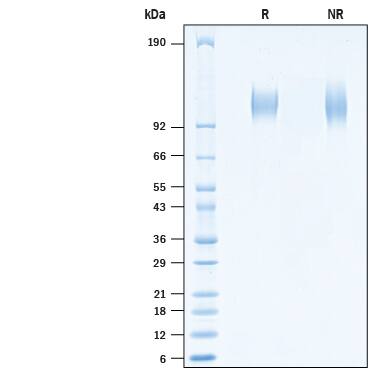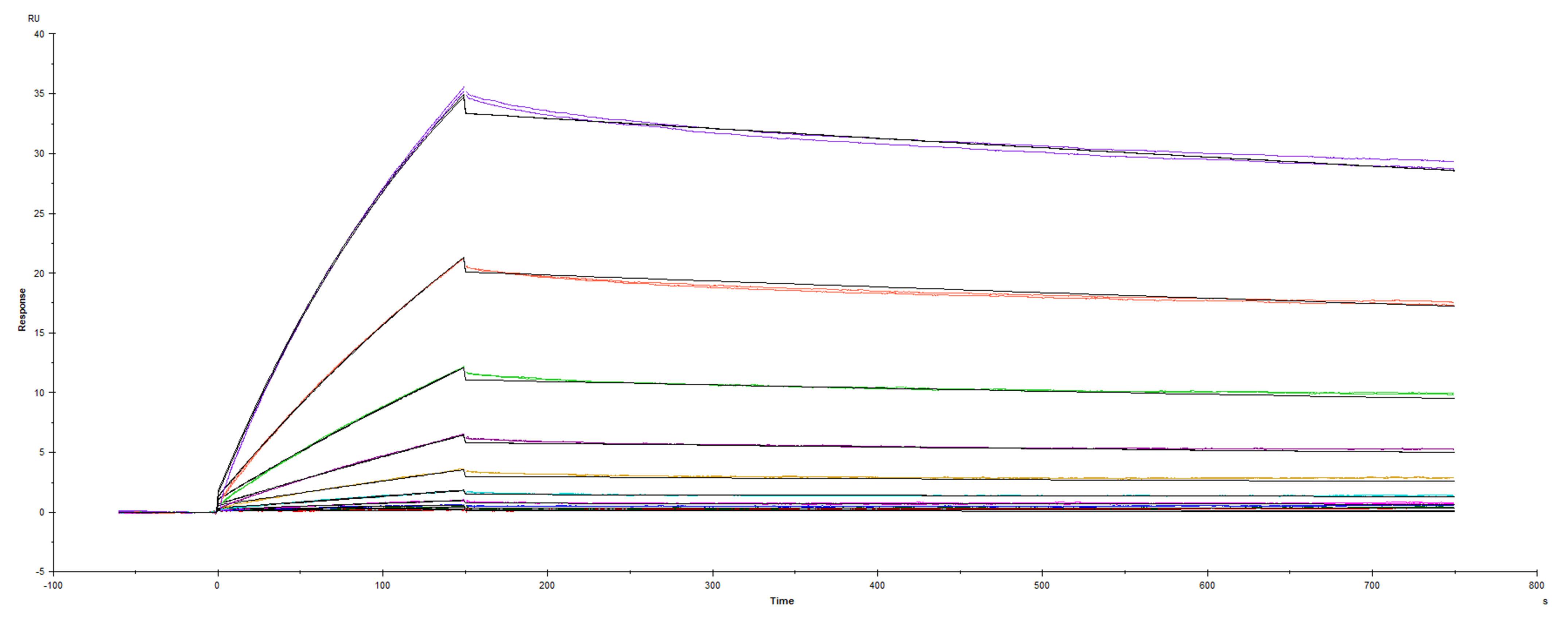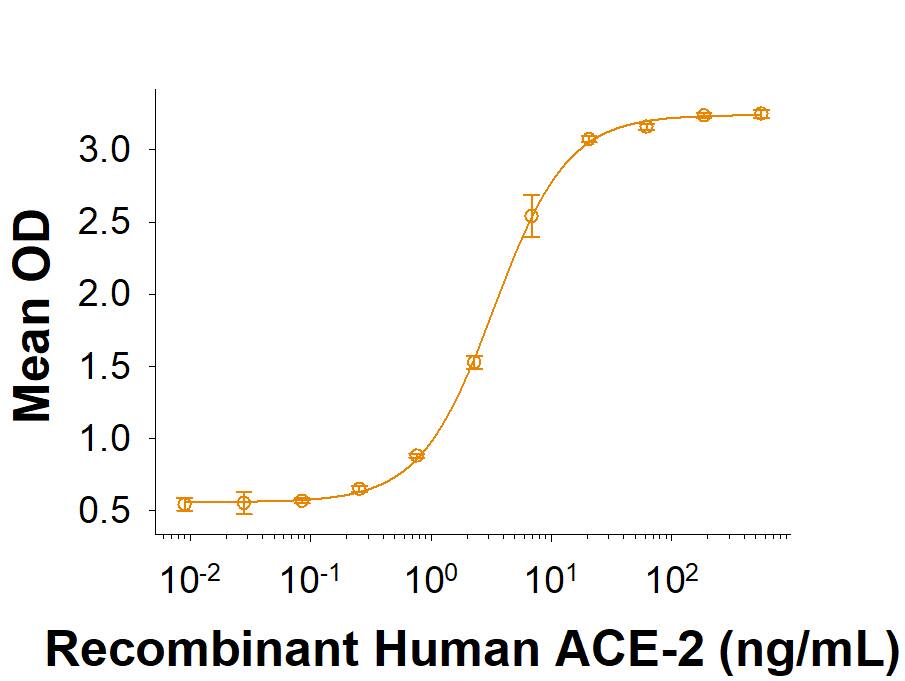Recombinant SARS-CoV-2 20C-US S1 Subunit His-tag Protein, CF
R&D Systems, part of Bio-Techne | Catalog # 10778-CV
D614G, Q677H

Key Product Details
Product Specifications
Source
Human embryonic kidney cell, HEK293-derived sars-cov-2 Spike S1 Subunit protein
Val16-Pro681 (Asp614Gly, Gln677His), with a C-terminal 6-His tag
Val16-Pro681 (Asp614Gly, Gln677His), with a C-terminal 6-His tag
Purity
>95%, by SDS-PAGE visualized with Silver Staining and quantitative densitometry by Coomassie® Blue Staining.
Endotoxin Level
<0.10 EU per 1 μg of the protein by the LAL method.
N-terminal Sequence Analysis
Protein identity confirmed by mass spectrometry
Predicted Molecular Mass
75 kDa
SDS-PAGE
105-117 kDa, under reducing conditions
Activity
Measured by its binding ability in a functional ELISA with Recombinant
Human ACE-2 His-tag
(Catalog #
933-ZN).
Scientific Data Images for Recombinant SARS-CoV-2 20C-US S1 Subunit His-tag Protein, CF
Recombinant SARS-CoV-2 20C-US S1 Subunit His-tag Protein Binding Activity.
Recombinant SARS-CoV-2 20C-US Spike S1 Subunit His-tag (Catalog # 10778-CV) binds Recombinant Human ACE-2 His-tag (933-ZN) in a functional ELISA.Recombinant SARS-CoV-2 20C-US S1 Subunit His-tag Protein SDS-PAGE.
2 μg/lane of Recombinant SARS-CoV-2 20C-US S1 Subunit His-tag (Catalog # 10778-CV) was resolved with SDS-PAGE under reducing (R) and non-reducing (NR) conditions and visualized by Coomassie® Blue staining, showing bands at 105-117 kDa.Binding of ACE-2 to SARS-CoV-2 Spike S1 subunit protein with D614G Q677H mutations by surface plasmon resonance (SPR).
Recombinant SARS-CoV-2 Spike protein mutant S1subunit D614G Q677H His-tag was immobilized on a Biacore Sensor Chip CM5, and binding to recombinant human ACE-2 (933-ZN) was measured at a concentration range between 0.092 nM and 47.2 nM. The double-referenced sensorgram was fit to a 1:1 binding model to determine the binding kinetics and affinity, with an affinity constant of KD=2.129 nM.Formulation, Preparation and Storage
10778-CV
| Formulation | Lyophilized from a 0.2 μm filtered solution in PBS with Trehalose. |
| Reconstitution | Reconstitute at 500 μg/mL in PBS. |
| Shipping | The product is shipped at ambient temperature. Upon receipt, store it immediately at the temperature recommended below. |
| Stability & Storage | Use a manual defrost freezer and avoid repeated freeze-thaw cycles.
|
Background: Spike S1 Subunit
References
- Wu, F. et al. (2020) Nature 579:265.
- Tortorici, M.A. and D. Veesler (2019) Adv. Virus Res. 105:93.
- Bosch, B.J. et al. (2003). J. Virol. 77:8801.
- Belouzard, S. et al. (2009) Proc. Natl. Acad. Sci. 106:5871.
- Millet, J.K. and G.R. Whittaker (2015) Virus Res. 202:120.
- Ortega, J.T. et al. (2020) EXCLI J. 19:410.
- Yuan, Y. et al. (2017) Nat. Commun. 8:15092.
- Tai, W. et al. (2020) Cell. Mol. Immunol. https://doi.org/10.1016/j.it.2020.03.007.
- Wang, X. et al. (2020) https://doi.org/10.1038/s41423-020-0424-9.
- Wang, K. et al. (2020) bioRxiv https://www.biorxiv.org/content/10.1101/2020.03.14.988345v1.
- Pater, A. et al. (2021) bioRxiv https://doi.org/10.1101/2021.01.11.426287.
Long Name
Spike Protein, S1 Subunit
Alternate Names
SARS-CoV-2
UniProt
Additional Spike S1 Subunit Products
Product Documents for Recombinant SARS-CoV-2 20C-US S1 Subunit His-tag Protein, CF
Product Specific Notices for Recombinant SARS-CoV-2 20C-US S1 Subunit His-tag Protein, CF
For research use only
